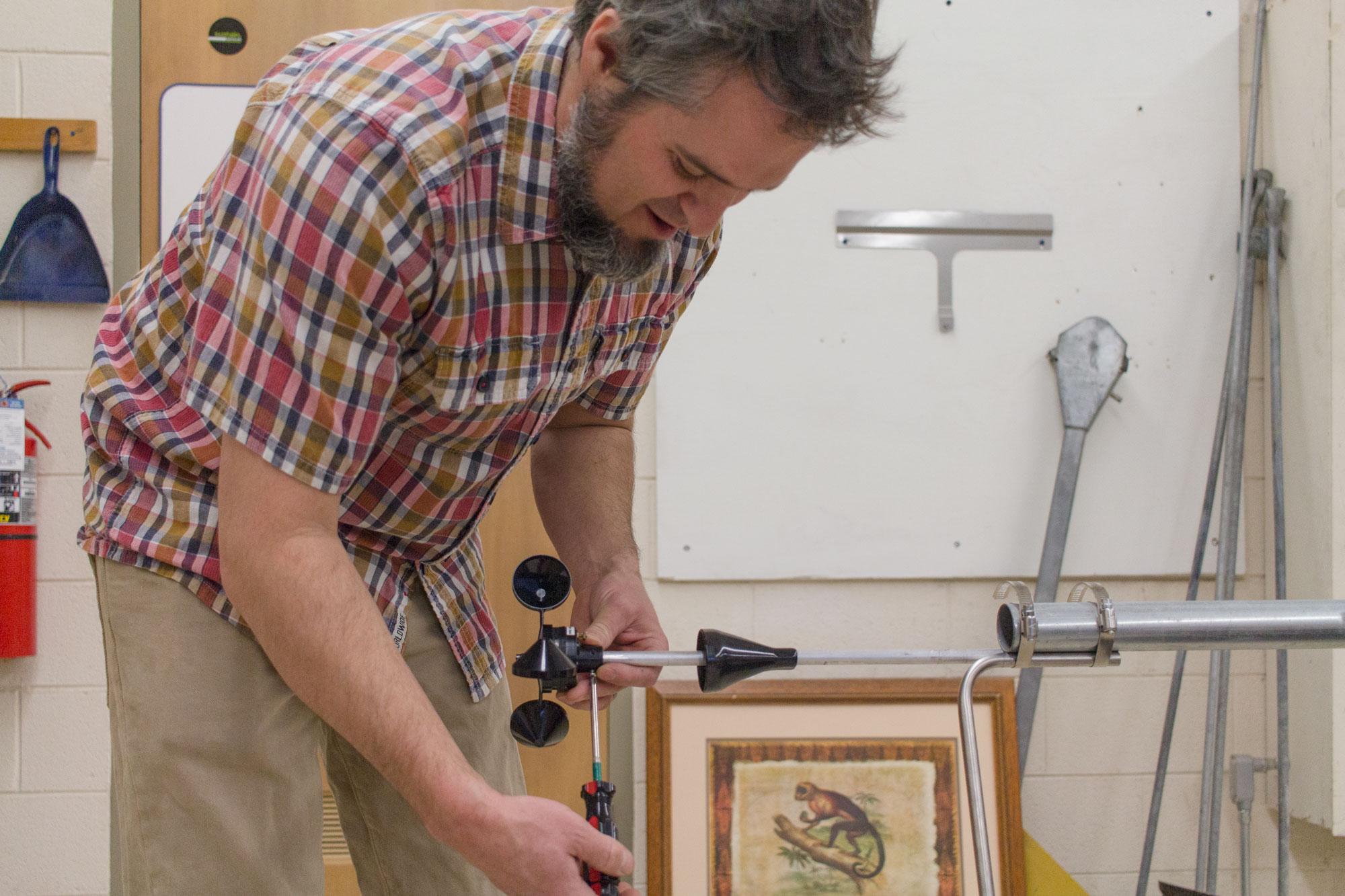Brent Summerville, a sustainable technology Practitioner-in-Residence at Appalachian State University, recently installed a wind measurement system at the Kerr Scott Dam and Reservoir in Wilkesboro, North Carolina. The purpose of the measurement system is to determine whether it is a viable location for a wind turbine.
Summerville was hired by the U.S. Army Corps of Engineers and worked on the project with his graduate assistant, Robb O’Brien.
“The U.S. Army Corps of Engineers wanted to test the wind resource available at the Kerr Scott Dam because their hope is that they would put vertical wind turbines there,” O’Brien said. “They wanted to make sure that the energy generated would warrant the costs of putting wind turbines on the dam.”
They installed the system on the top of a bridge leading up to the intake tower of the dam.
The custom system consists of a 15-foot tower, with anemometers at varying heights to measure wind speed, a wind vane to measure the direction of the wind and a thermometer for gauging the temperature. The installation is connected to a solar powered data logger that will transmit the information to the U.S. Army Corps of Engineers.
Multiple anemometers were added to increase the reliability of the data.
“It’s always good to have two sensors to measure the differences at the differing altitudes, but it’s also useful to make sure they are functioning,” Summerville said. “For instance, if the upper one malfunctions, we wouldn’t know it as quickly unless the bottom one is giving drastically different results.”
O’Brien said the ideal wind speed for a turbine would be around 12 miles per hour.
“Ideally, you like to shoot for 12 to 15 miles per hour,” O’Brien said. “Can a wind turbine work with less, like 10? Sure, but it’s going to take a lot longer to make up for the costs. And this is just my opinion, but if you’re getting anything less than 10 miles per hour, there’s a better way to invest your money.”
Summerville said it should take about a year to determine whether it would be worthwhile to build a wind turbine on the dam.
“Obviously with things like this, the longer you compile data, the better your results will be,” Summerville said. “But of course you have to stop at some point, so it’ll probably be around 12 months.”
It took Summerville and O’Brien about two weeks to build the measurement system, and the process was sped up because of their ability to work together.
“We’re a good team,” O’Brien said. “Obviously, he’s the teacher and I’m learning from him, but there are also some parts of the process that I have more experience in.”
Scott Graham, the interpretive park ranger for the Wilmington district of the USACE, said the project is part of an effort to adopt alternative sources of energy at many of their federal parks.
“We’re always looking to increase our sustainability efforts,” Graham said. “If we can install those wind turbines then we’ll be able to use those to power a lot of lighting in the dam and around a walkway.”
Graham said the location makes it a likely spot for wind turbines to be effective.
“We’re at a high altitude and it’s right there on a lake, which is good for wind, but right now we’re not entirely sure,” Graham said.
Summerville said it is important to be sustainable so that others might follow your example.
“We are here as stewards of the environment,” Summerville said. “Part of our task is to train and to show people how they can implement the resources they have to generate clean energy, just for the livelihood and sustainability of the human race.”
Story by: Tommy Culkin, Senior News Reporter
Photos by: Maleek Loyd

